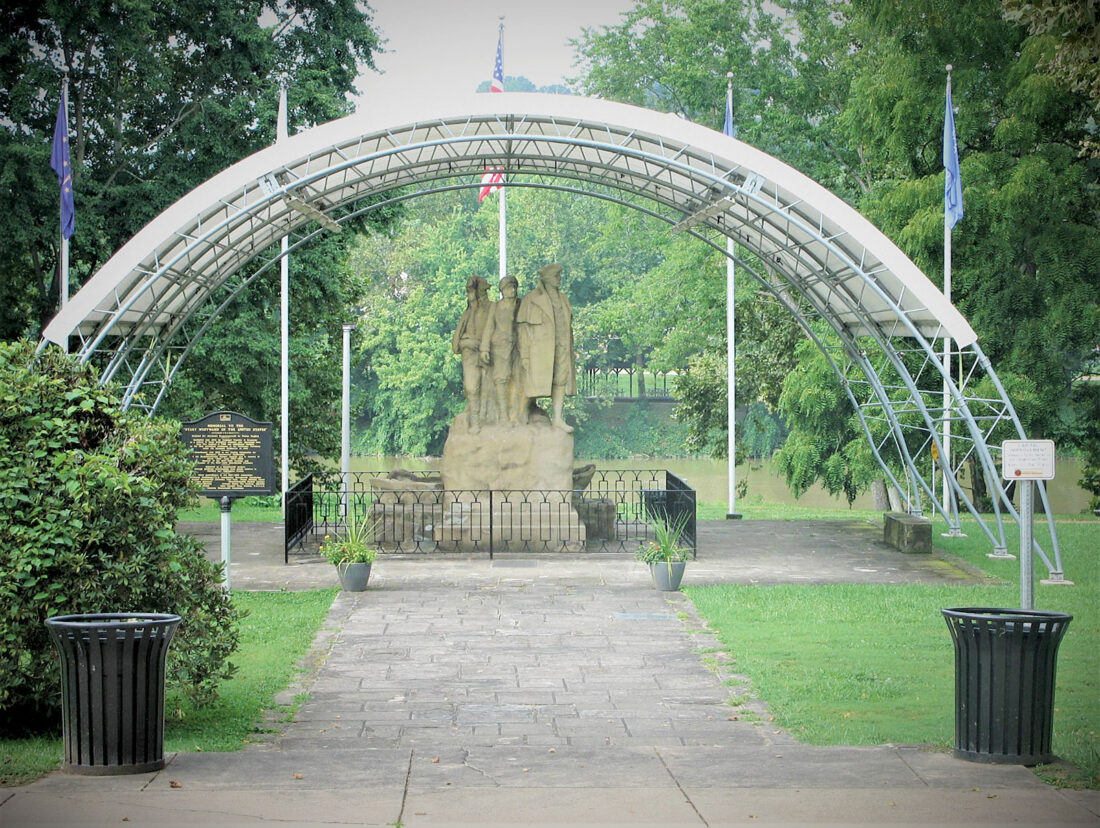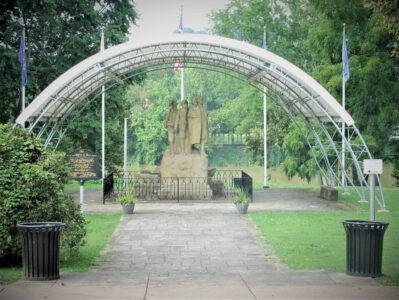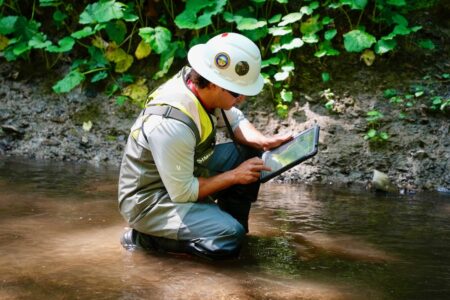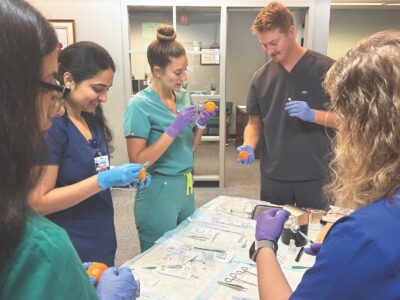Standing the test of time: Start Westward Monument sees preservation support at all levels
Start Westward Monument sees preservation support at all levels
- (File photo) The Start Westward Monument is shown in August 2022, in Muskingum Park.

(File photo) The Start Westward Monument is shown in August 2022, in Muskingum Park.
A coordinated preservation effort is underway to protect one of Marietta’s most iconic landmarks — the Memorial to the Start Westward of America.
The historic sandstone sculpture stands in Muskingum Park. City officials, the State of Ohio, preservation specialists and a local advocacy group say they are collaborating to ensure the long-term preservation of the monument, keeping in mind its cultural significance and material fragility.
Created by Gutzon Borglum, the sculptor for Mount Rushmore, the sculpture was installed in 1938 and is listed as a contributing object to the Marietta Historic District on the National Register of Historic Places. Now it is facing the natural wear of time and exposure.
In response, the City of Marietta has proposed relocating the sculpture to a climate-controlled facility and installing a bronze replica in its place – an approach they say is designed to balance historical preservation with proactive conservation.
According to Development Director Geoff Schenkel, the city has proposed funding conservation through Ohio Capital Funding, the American Rescue Plan Act, contributions from local donors and grants.
The Ohio State Historic Preservation Office (SHPO), the Ohio History Connection’s Historic Sites Office and the city have been actively coordinating to ensure the project follows both the National Historic Preservation Act’s Section 106 review process and Ohio’s preservation standards.
“The State of Ohio owns the property and sculpture and has delegated to the Ohio History Connection the care and oversight of the property,” said Kristen Koehlinger, deputy state historic preservation officer. “The Historic Sites Office has determined that the best process to preserve the sculpture currently is to move it to a climate-controlled facility.”
While the plan does constitute what SHPO calls an “adverse effect” due to the sculpture’s removal from its historic setting, officials are emphasizing this designation is part of what they call a structured and thoughtful process to explore preservation solutions.
“The consulting process is to gather options to avoid, minimize or mitigate the adverse effect,” Koehlinger explained. “Once that information has been collected, it is up to the Historic Sites Office to determine if any of the proposed options would be feasible based on funding and other restrictions.”
The Start Westward Memorial Society is a nonprofit organization which, according to their website, seeks to educate on the history of the statue and provide private sector support for SHPO.
The society has sought the opinion of preservation professionals, such as Lorraine Schnabel of Schnabel Conservation LLC. Schnabel proposed a series of non-invasive tests — such as absorption rate analysis and petrographic studies — to evaluate the condition of the sandstone and help determine potential treatment options.
“Even if the ultimate decision is relocation, knowing that every option was considered carefully is vital to the spirit of historic preservation,” she said.
City consultant Fred Smith, who was hired to oversee the Section 106 process and ensure public and professional input was appropriately gathered, emphasized the approach being taken prioritizes the sculpture’s longevity.
“We’ve decided on what we consider a very conservative approach to the historic fabric,” Smith explained. “This involves moving the original sculpture to protect it in its current condition, while installing a bronze replica as mitigation. The strongest benefit to this approach is reversibility. If in the future conditions warrant altering or modifying the original statue and putting it back in place, this could happen. Until then, the sculpture will be protected in its most original condition.”
However, some concern surrounds the bronze replica.
Brandon Downing, an early American historian at Marietta College, offered caution during recent discussions surrounding the monument’s preservation and potential relocation.
“For me as a historian, the monument, the memorial itself, has a history, too,” Downing said. “The sandstone comes from Marietta. The people who built it came from Marietta. The people who put it together and got FDR (President Franklin D. Roosevelt) to come here were from Marietta. That monument has history in its very stones.”
Downing emphasized that altering the monument’s structure or removing it from its original location risks changing its story and symbolic meaning.
“When you take it away from where it is, you change the story as well,” he said. “Once it’s gone, you’ve changed the meaning and the history of it.”
He urged decision-makers to “exhaust all possibilities” for preserving the monument in place before considering more drastic options.
“I think it’s a good idea to exhaust all possibilities. And if it can’t be preserved in place, then that’s, let’s go to bronze,” Downing said.




